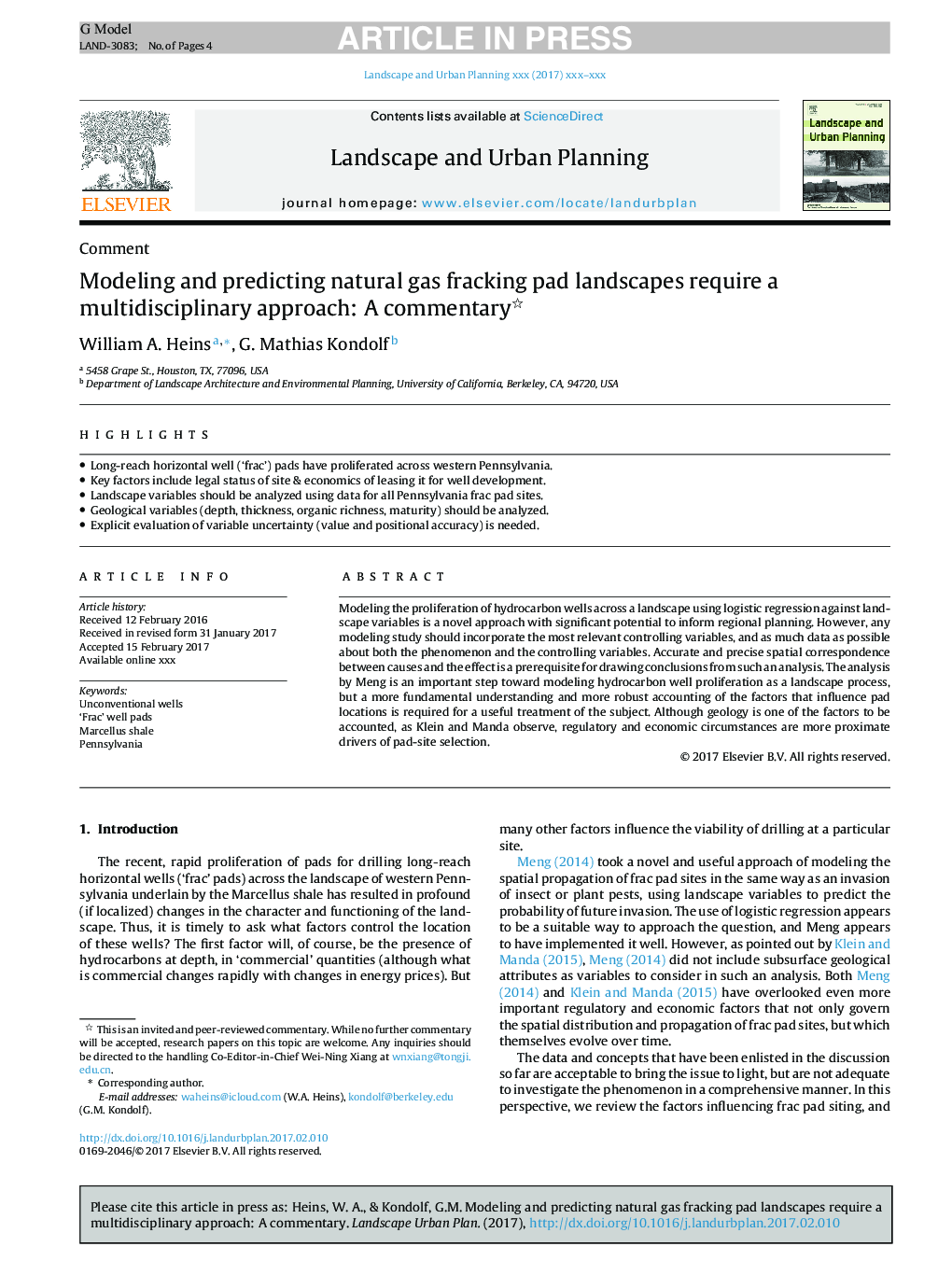| Article ID | Journal | Published Year | Pages | File Type |
|---|---|---|---|---|
| 7460145 | Landscape and Urban Planning | 2018 | 4 Pages |
Abstract
Modeling the proliferation of hydrocarbon wells across a landscape using logistic regression against landscape variables is a novel approach with significant potential to inform regional planning. However, any modeling study should incorporate the most relevant controlling variables, and as much data as possible about both the phenomenon and the controlling variables. Accurate and precise spatial correspondence between causes and the effect is a prerequisite for drawing conclusions from such an analysis. The analysis by Meng is an important step toward modeling hydrocarbon well proliferation as a landscape process, but a more fundamental understanding and more robust accounting of the factors that influence pad locations is required for a useful treatment of the subject. Although geology is one of the factors to be accounted, as Klein and Manda observe, regulatory and economic circumstances are more proximate drivers of pad-site selection.
Keywords
Related Topics
Life Sciences
Agricultural and Biological Sciences
Ecology, Evolution, Behavior and Systematics
Authors
William A. Heins, G. Mathias Kondolf,
